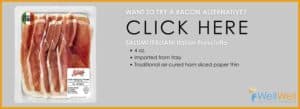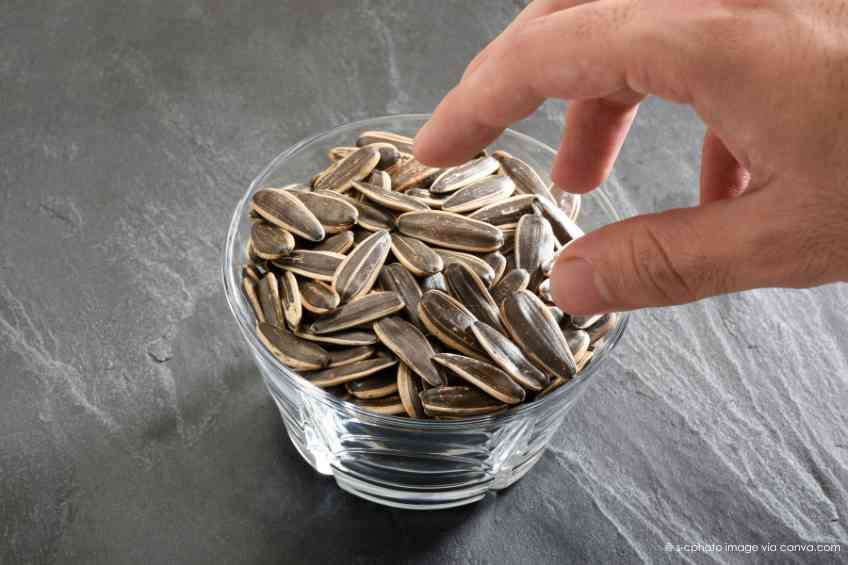The Skinny:
The smell and taste of bacon, pork bacon of course, is about as gastronomically seductive as food can get. Its draw is so powerful that it has become America’s top-selling processed protein. U.S. sales reached $6.3 billion in 2022, which covered more than two billion pounds of bacon in total and 18 pounds annually in per-person consumption. Yet the love of traditional bacon apparently only goes so far. In fact, health-conscious consumers are increasingly worried about the less-than-desirable nutritional aspect of a center cut or side bacon that is America’s favorite. Consequently, overall pork bacon sales declined 6.5 percent in 2021 as consumers reduced consumption or looked for alternatives. What’s the concern? Well, the difference in bacon comes down to calories, fat, cholesterol and salt and center cut pork bacon has plenty of it all. Consider that a 100-gram serving contains 541 calories, 41.78 grams of fat, 110 milligrams of cholesterol and 2,310 milligrams of salt. It also holds 37.04 grams of protein. Interested in a healthy substitute for bacon? Read on.
The Slate:
Turkey Bacon
This bird bacon alternative is growing more popular every year, which is driving up its price. A 100-gram serving has significantly fewer calories at 382 as well as less fat at 27.9 grams than pork bacon. It also has less protein at 29.6 grams of protein and slightly less sodium at 2,285 milligrams.
Duck Bacon
Duck bacon is another alternative that offers some plusses and minuses compared to traditional bacon. A 100-gram serving has under half the calories (200 calories), fat (16.6 grams) and sodium (966 milligrams). But it also has a lot less protein at 16.7 grams. Another downer is that it is expensive, but it is reportedly high in taste.
Prosciutto
This bit of ham is different from belly bacon simply because it comes from a pig’s hind leg. But it is still cured, which means it offers a range of cooking options, allowing it to be served up soft, crisp or crunchy. It is not only flexible, a 100-gram portion has less than half the fat and calories of traditional bacon at 214 calories and 12.5 grams of fats, respectively. It also has a bit less salt at 1,857 milligrams, but a lot less protein at 25 grams.
Capicola
This is another traditional cured ham cut from Italy. While considered more delicate than prosciutto, it is also less cured. It has a lot fewer calories and less fat than traditional bacon at 250 calories and 10.7 grams of fat. It also has substantially more salt at 2,607 milligrams. With 37 grams of protein, it is similar to traditional bacon.
Beef Bacon
Bacon or cured meats don’t have to come from pork. There is beef bacon, for example, which has more protein than pork bacon but less fat and salt and fewer calories. A 100-gram serving contains 367 calories, 17 grams of fat and only 625 milligrams of salt. It does have 50 grams of protein.
Salmon Bacon
Some bacon can even be made from fish, like salmon, which offers a low-calorie, low-salt and low-fat option. A 100-gram serving of salmon has only 133 calories, 4.6 grams of fat, no cholesterol and just 50 milligrams of sodium. Another benefit is that it is rich in omaga-3 oils. It has less protein at 22 grams.
Veggie Bacon
Yes, even veggies, some of them at least, can produce a “fake” or non-meat alternative bacon. Options include carrot bacon, soybean bacon and even mushroom bacon. These alternatives are generally high in protein, lower in calories, salt and cholesterol.
Eyes Up:
Do you have a favorite mushroom? Let us know at info@wellwellusa.com.
WellWell editors independently identify services and products of interest. If readers purchase anything through the associated links, WellWell may earn a commission, which goes to support our work. Learn More.













